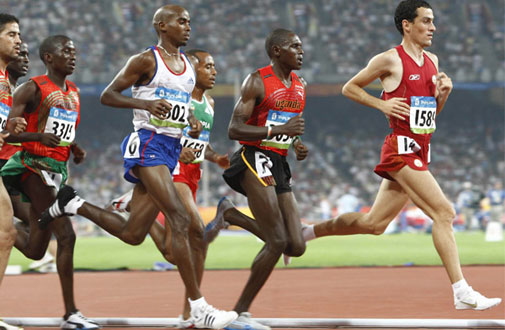Endurance Training: Preparing for Endurance Events

The focus of this article is the investigation into the current training methods utilised to enhance endurance running performance. The article will include a brief outline regarding the benefits of strength training when used in conjunction with endurance training programs.
Although it is well known that specificity is one of the fundamental components of training, many researchers have looked into the effects of incorporating maximal or explosive strength training within endurance training programs in order to enhance performance. The combination of these two distinctively different types of training is generally not prescribed in training programs, as it has been shown that they rely on different enzyme activity and metabolic pathways in order to achieve physiologic improvements (Hamilton, 2008, p. 8-11).
Nevertheless, studies conducted by various researchers demonstrate that the implementation of strength training conclusively improved several aspects of physiology and therefore may play an influential role in the development of endurance performance. One such example is the study conducted by Norwegian scientists who investigated the effects of maximal strength training on running economy (the oxygen cost of maintaining a given running speed, in this case 70% VO2max), and time to exhaustion at maximal aerobic speed. The study used 17 well-trained runners who were divided into two groups. The intervention group (4 males, 4 females) implemented 4 sets of half-squats 3 times per week into their normal training regimen for a total of 8 weeks. The loading was set so a maximum of 4 repetitions was completed per set. The control group on the other hand did not implement any strength training – they continued with their normal endurance training regimen for 8 weeks (Med Sci Sports Exerc., 2008, as cited in Hamilton, 2008, p. 11 & 12).
Relative strength gains were noted in the intervention group such as a 33.2% improvement in their 1-rep max and a 26% elevation in their rate of force development. Other improvements relating to endurance performance were also illustrated, which included a 21.3 % improvement in their time to exhaustion at maximal aerobic speed and a 5% improvement in their running economy. A major feature of such improvement s was the absence of weight gain or drop in VO2max values. The control group on the other hand did not demonstrate any these benefits (Med Sci Sports Exerc., 2008, as cited in Hamilton, 2008, p. 12).

Another study conducted by Finnish scientists investigated the effects of concurrent explosive strength training and endurance training on both aerobic and anaerobic performance. The protocol employed 25 distance runners who were separated into two groups (intervention 13, control 12). Both groups undertook an 8 week training program, which consisted of equal training volume; however in the intervention group 19% of the endurance training was substituted with explosive strength training. This consisted of various sprints and strength drills. Following the 8 week program, the runners were evaluated. The intervention group displayed several improvements in performance related factors including faster speeds during maximal anaerobic running tests, greater force development and neural activation of their muscles, and a 2 fold increase in the thickness of the quadriceps muscles. However, both groups showed no changes in their running economy, maximal speed during an aerobic running test, or maximal oxygen uptake (VO2max). Nevertheless, the changes that were displayed in the intervention group may still assist in improving overall performance. Specifically, with improvement in the anaerobic energy system, greater force generation and enhanced neural control may prove to be beneficial during the required short high-energy bursts during hill climbs and sprint finishes (Int J Sports Med., 2007, as cited in Hamilton, 2007, p.12).
It is clear through this research alone that the incorporation of strength based training methods into endurance training regimes can be effective in enhancing endurance performance and at the very least, improve the anaerobic components of such events. However, care must be taken to ensure the anaerobic training methods don’t exceed 20% of the total training volume in order to avoid compromising the endurance training effects.
If you found this article interesting you may also enjoy reading Darn Well Jogging Around, Programming for Sport Specific Training, or The Effects of Resistance Training on Bone Mineral Density.
Endurance training techniques are covered in the Diploma of Sport and Certificate IV in Fitness.
